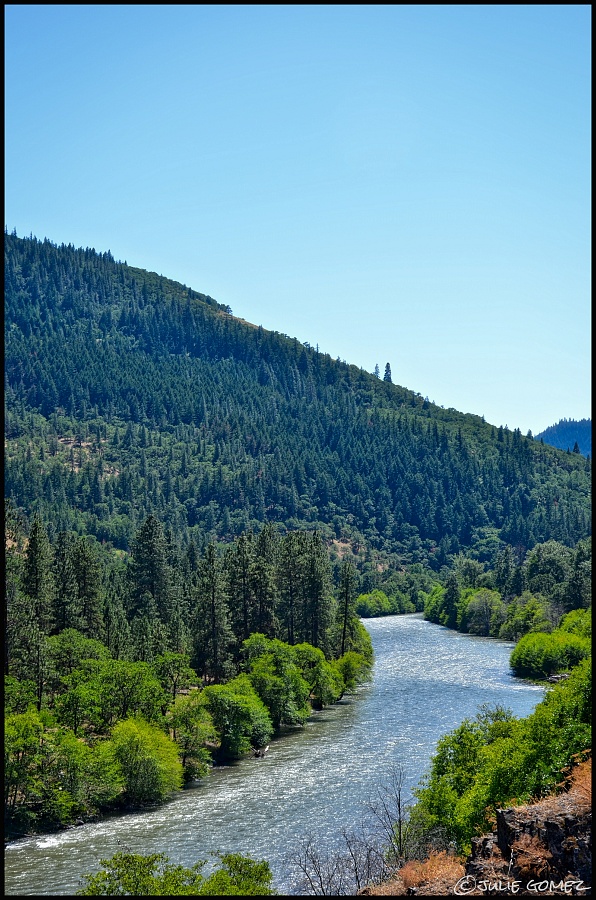
The river is everywhere —Hermann Hesse (1877-1962) Swiss poet, novelist, painter
____________________
When the forecast called for record highs with triple digits, the last place we expected to end up was east of the Cascades in the Columbia River Gorge where the air can sizzle to 110 degrees.
With the air conditioning blasting, and sipping iced coffee, we drove from Mount Hood to Hood River, and then east, into a headwind, through the Columbia River Gorge to The Dalles.
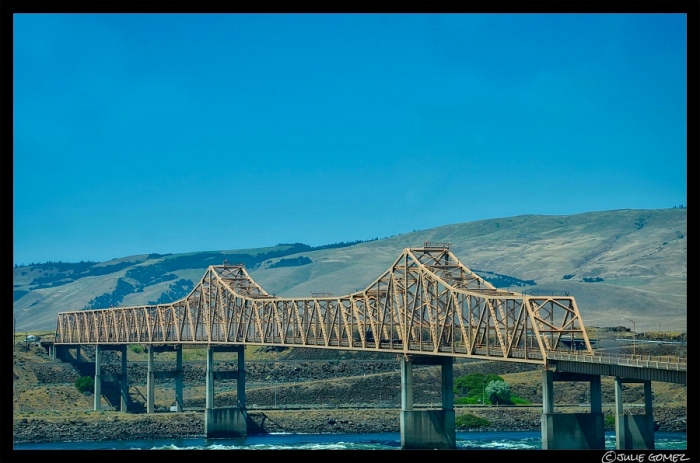
In The Dalles, we would cross the Columbia River via The Dalles Bridge into Washington. But before doing so, we stopped at The Dalles Dam, one of eleven dams that spans the Columbia. The Dalles Dam stretches a mile and a half across the Columbia between Oregon and Washington; a magnificent, yet shameful sight.
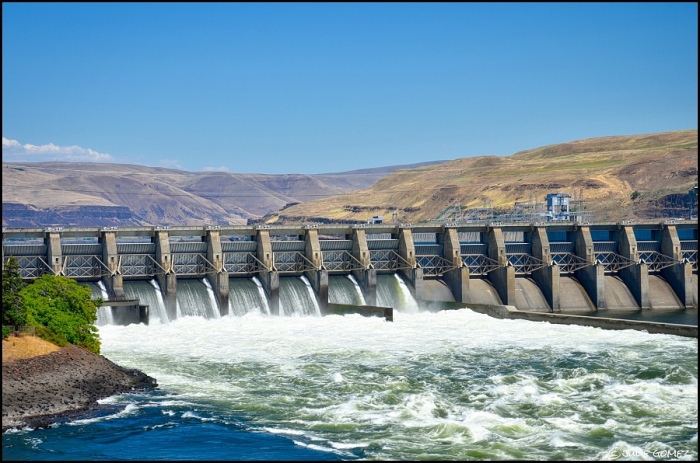


The air was hot, ninety degrees, and it wasn’t even noon yet! Chris stayed in the truck with the air conditioning running, but not me. Into the hot, blustery wind I went. Having been refrigerated for an hour, my body warmed quickly to a near sweat. Standing on the sun-baked basalt I watched the river pour from the spillway; the grave of what was once a fantastic ancient waterfall and rapids; a sacred Native American fishing site known as Celilo Falls and Long Narrows (aka Fivemile Rapid) and Short Narrows (aka Tenmile Rapid). In 1957, following the completion of The Dalles Dam, Celilo Falls and the rapids were drowned, and with them the sacred land of ritual sites, burial grounds, and the Village of Celilo. In their place, is a large reservoir, and Lake Celilo that fills the area behind The Dalles Dam. Today, Indian fishing platforms line the basalt along the riverbank. Behind me, the Indian Pine Tree Village; today, only fragments remain of Bridge Church built in the 1890s. With sadness in my heart, we crossed The Dalles Bridge.


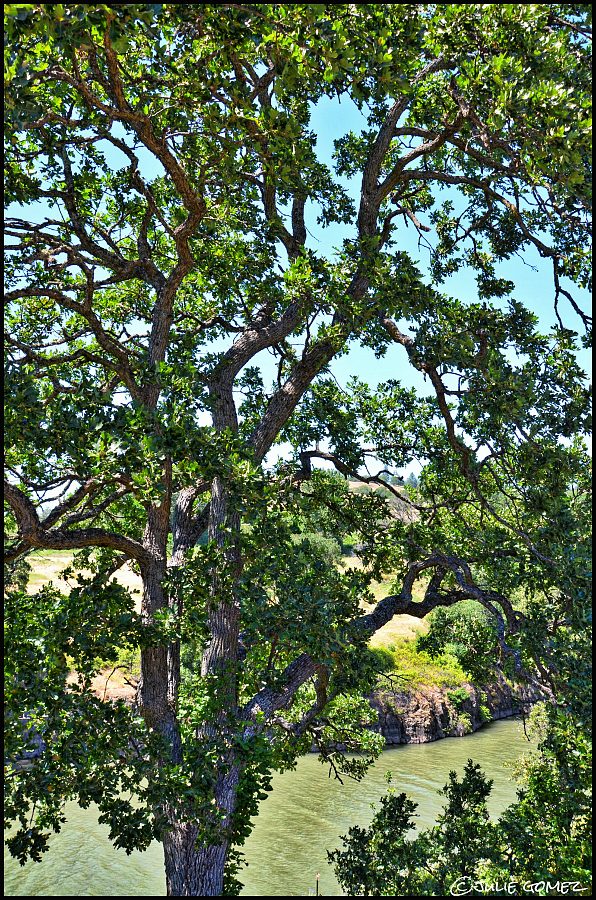

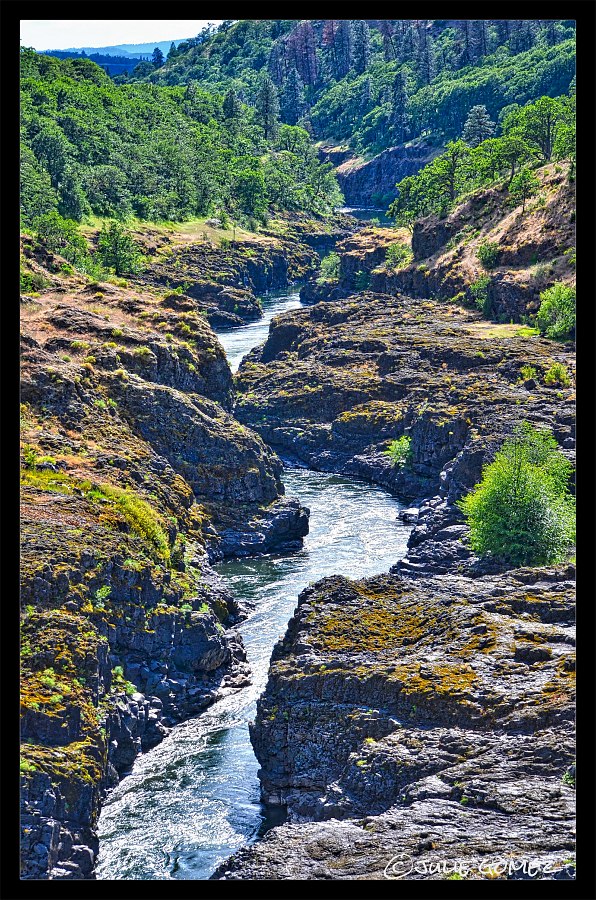
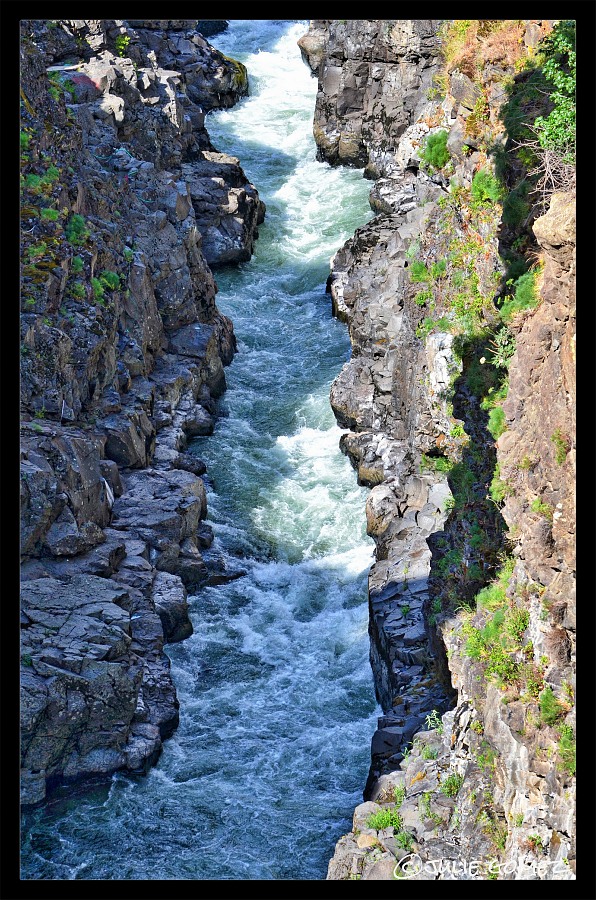
In the town of Lyle, Washington (built on a massive Missoula Floods gravel bar, and where explorers Lewis and Clark camped in 1805) we followed the Klickitat River. The area is a rugged plateau of beautiful hills and canyons. The rivers headwaters emerge far upriver near Gilbert Peak in a remote pocket of the Yakama Indian Reservation. The river is named for the Klickitat People that dwelled here. A hot Chinook wind rattled the oak trees that covered the hills. The river broadened and sparkled like a billion stars in a blue-green galaxy. In the slot canyon a footbridge offered unforgettable views of the river being squeezed between boulders; a powerful sight, and what I think is the most beautiful segment of the rivers 75-mile reach.
It wasn’t noon yet, and already the temperature was 90 degrees. Inside the truck, I cranked up the air conditioning. For miles, we followed the river when the road narrowed and wound steeply leaving the river far below. We pulled into a turnout, our weather gauge read 103 degrees! I got out of the truck in the sweltering heat to stretch my legs, and take in the marvelous views. Between the heat, the surrounding hills, and the river coursing far below, it was a dizzying effect. With loose gravel, and no guard rails, I kept a respectable distance. Below was where I wanted to be where trees casted their long shadows onto the river that teased me. I’d have given anything at that moment to sit in their shade, and soak my feet in those cool green waters.
Seldom a day goes by without what I call, “a nature moment.” That extra special encounter that stays in your heart forever. So it was along the Klickitat River at the edge of the canyon where the gravel was loose, and the temperature boiled that such a moment happened. Far below, in the tree shadows, I spotted a large doe waded in the river. She was alone, and I don’t think she saw me, or maybe she was enjoying the river so much she didn’t care. She was a peaceful, beautiful sight, and for a moment, I forgot all about the heat. I wished her well, and retreated to the air conditioning.


We continued our ascent into the hills, and the river disappeared when we reached the plateau. It was an incredibly beautiful place bordering forest and high desert. Our day along the Klickitat had been a fine one. As we sat in a field drinking ice water we listened to grasshoppers clicking and buzzing, and enjoyed the view of Mount Adams before turning back for home.
____________________
Copyright 2016. All rights reserved.

You must be logged in to post a comment.